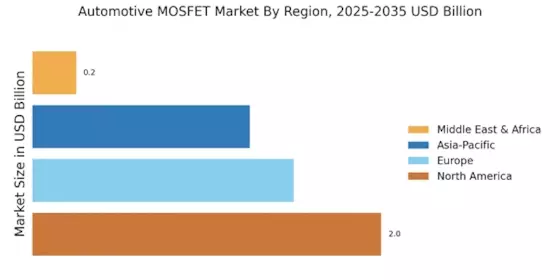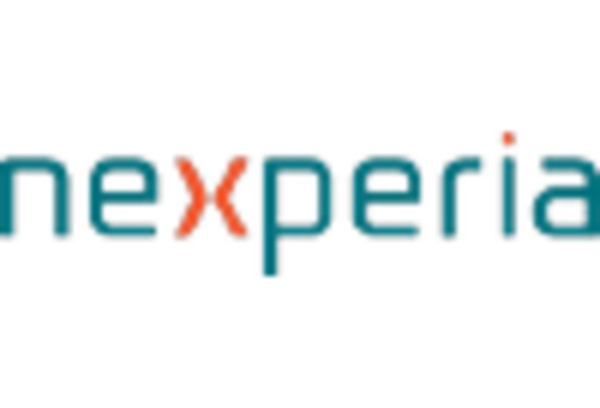Regulatory Push for Energy Efficiency
Regulatory initiatives aimed at enhancing energy efficiency in the automotive sector are driving the Automotive MOSFET Market. Governments are increasingly implementing stringent regulations to reduce carbon emissions and promote energy-efficient technologies. For example, the implementation of fuel economy standards and emissions regulations is compelling manufacturers to adopt advanced power electronics solutions, including MOSFETs, to improve vehicle efficiency. This regulatory push is likely to create a favorable environment for the Automotive MOSFET Market, as automakers seek to comply with these standards while enhancing vehicle performance and reducing environmental impact.
Growth of Autonomous Vehicle Technology
The growth of autonomous vehicle technology is emerging as a significant driver for the Automotive MOSFET Market. As vehicles become increasingly automated, the demand for advanced electronic components, including MOSFETs, is expected to rise. These components are essential for managing power distribution and ensuring the reliability of various systems within autonomous vehicles. The market for autonomous vehicles is projected to reach USD 60 billion by 2030, indicating a substantial opportunity for MOSFET manufacturers. This trend suggests that the Automotive MOSFET Market will experience growth as automakers integrate more sophisticated electronic systems to support autonomous functionalities.
Increasing Demand for Electric Vehicles
The rising demand for electric vehicles (EVs) is a primary driver for the Automotive MOSFET Market. As consumers increasingly prioritize sustainability and energy efficiency, automakers are responding by expanding their EV offerings. In 2025, it is estimated that the sales of electric vehicles will surpass 10 million units, significantly boosting the need for efficient power management solutions. MOSFETs play a crucial role in the power electronics of EVs, enabling efficient energy conversion and management. This trend is likely to continue, as governments worldwide implement stricter emissions regulations and provide incentives for EV adoption, further propelling the Automotive MOSFET Market.
Rising Adoption of Hybrid Electric Vehicles
The rising adoption of hybrid electric vehicles (HEVs) is contributing to the growth of the Automotive MOSFET Market. HEVs combine traditional internal combustion engines with electric propulsion systems, necessitating efficient power management solutions. MOSFETs are integral to the power electronics that control the flow of electricity between the battery and the electric motor. As consumers increasingly opt for HEVs due to their fuel efficiency and reduced emissions, the demand for MOSFETs is expected to rise. The Automotive MOSFET Market is likely to benefit from this trend, as manufacturers focus on developing advanced power management systems to support the growing HEV segment.
Technological Advancements in Semiconductor Devices
Technological advancements in semiconductor devices are significantly influencing the Automotive MOSFET Market. Innovations in materials and manufacturing processes have led to the development of high-performance MOSFETs that offer improved efficiency and thermal management. For instance, the introduction of silicon carbide (SiC) and gallium nitride (GaN) MOSFETs has enhanced the performance of automotive applications, particularly in electric and hybrid vehicles. These advancements are expected to drive the market, as manufacturers seek to optimize power systems and reduce energy losses. The Automotive MOSFET Market is likely to benefit from these technological improvements, which may lead to increased adoption rates across various vehicle types.

















Leave a Comment